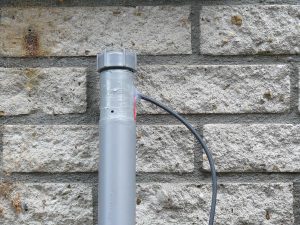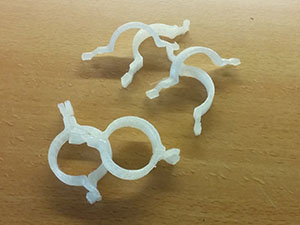This page is a work in progress, Expect this page to change often.
Hydroculture (hydroponics and aquaponics) is a soil free way of growing plant. The roots of the plants are suspended in water that is enriched with all the nutrient. How these nutrients get added to the water depends on the technique. With hydroponics the user adds the nutrients to the water in the form of water soluble fertilizers. In aquaponics the nutrients are added to the water by fish. Fish eat fish food and produce waste. This waste gets broken down by bacteria and enriches the water. The advantages of both these techniques is that water and nutrients are used a lot more efficiently. There are a lot of values thrown around on the internet, but common values told are that aquaculture uses 10% of the water and 25% of the nutrient compared to soil based growing. Also plants grow a lot faster and stronger because plants don’t have to compete for water and nutrients. All plants have everything available, all the time. Hydroponics is already being used commercially to grow certain crops, such as lettuce and tomatoes.
I have been intrigued by these techniques for a while now and want to give it a try. I like the efficiency and controllability of the system. Now doing a basic setup is all right, I have already had a pilot system running and really enjoyed doing it. I always liked growing plants, but never really wanted to spend the time necessary with a normal garden. Now this is Ytec, and I am good at electronics and hardware, so why not automate the system as much as possible. Hydroculture lends itself perfectly to automation. The most important thing in the system is water, and that is collected and monitored in one central place.
A hydroponics system, especially an automated one, requires a lot of elements. Building and explaining all of these elements at once would be quite overwhelming and probably wouldn’t motivate anyone. I have tried to split the system up in small manageable blocks.
(As for right now a lot of these blocks are in progress. That is because my system is actually planned for spring 2015. A lot of the systems still have to be designed and built. If you have helpful advise, things you want to see or links to relevant pages, tell so in the comments or use the contact form to contact me.)
Plant systems
The plants need to grow somewhere. Hydroculture offers a few ways of growing. All of these ways have their own advantages, disadvantages and preferred plants. The systems I want to try for my initial setup are:
[ezcol_1third]
[/ezcol_1third] [ezcol_1third]
[/ezcol_1third] [ezcol_1third_end]
[/ezcol_1third_end]
Control systems
At the heart of the Hydroponics system lies the controller. The controller is responsible for managing the entire system. This includes water values (such as PH, EC and temperature), environmental levels (such as temperature and humidity) and pumps to various plants and tanks. A simple GUI will allow the user to configure all sorts of functions, without ever needing to code anything. A built in RTC with battery keeps the time, even when the power fails, and all timing is stored on the EEPROM memory. This means that a blackout will not reset the system.
The controller is completely open source, meaning that anyone can add features to the controller, or write custom code to make it do something completely different. It is based around an Arduino Unp. Sensors include: PH sensor, EC sensor, DS18B20 temperature sensor, 10k temperature sensor, float switches and temperature/humidity sensors.
Go to the Hydroponics controller page (In progress) for more information.
Additional Items
[ezcol_1third]
The Capacitive Level Sensor is a contact-free way of measuring any liquid. It uses the capacitance of a fluid to determine what the level is. This system works on any fluid.
It uses stuff you find at a hardware store and it can be connected to a microcontroller like an Arduino using I2C.
[/ezcol_1third] [ezcol_1third]
3D printing offers a lot for hydroponics. There are a lot of smaller and larger plastic pieces in an average hydroponic system, and most of these can be 3D printed.
[/ezcol_1third] [ezcol_1third_end]
[/ezcol_1third_end]


Very interesting. I look forward to seeing something related to this topic and this fantastic post end my search in a very impressive way. keep up the great work mate.